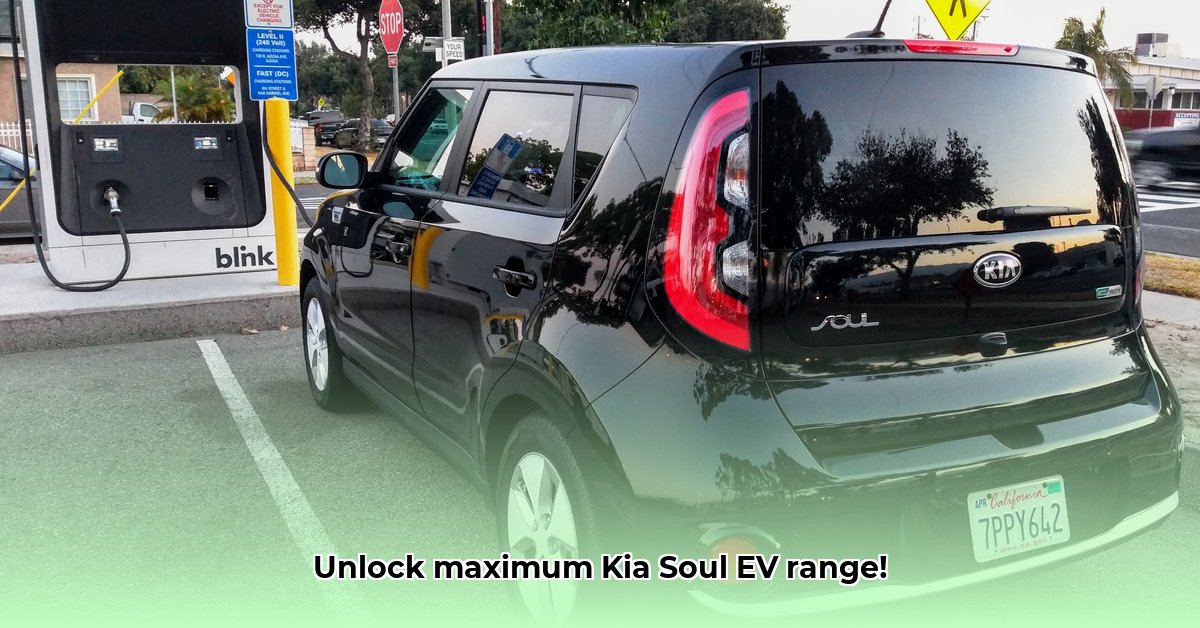
Understanding Your Kia Soul EV Battery: More Than Just a Charge
Your Kia Soul EV's battery, like any rechargeable battery, degrades over time. However, the rate of degradation depends heavily on several factors. Early models (pre-2016) showed slightly faster degradation than later models due to less advanced cooling systems. Think of it like leaving your phone in direct sunlight—the heat stresses the battery. Later models (2016 and beyond) feature improved cooling, significantly mitigating this issue. Many owners report retaining over 85% of their original battery capacity even after years of use. This highlights the importance of understanding and optimizing your charging habits.
What Impacts Your Kia Soul's Battery Health and Charging Speed?
Several factors significantly influence your Kia Soul EV's battery charging efficiency and lifespan:
Temperature: Extreme heat is detrimental. Park in shade, especially during summer months. Cold weather also affects performance, though less severely. How can you effectively manage temperature to optimize your Kia Soul EV battery's performance?
Charging Habits: Frequent fast charging accelerates degradation compared to slower Level 2 charging. Aim for Level 2 charging as much as possible. What percentage of your charging sessions utilize Level 2 chargers?
Driving Style: Aggressive driving (hard acceleration and braking) consumes more energy, stressing the battery. Smooth driving conserves energy and prolongs battery life. How does a smooth driving style contribute to better battery management in EVs?
Age and Mileage: Natural degradation occurs over time and with increased mileage. However, proper care significantly slows this process. What are the typical battery degradation rates for Kia Soul EVs based on mileage and model year?
Battery Management System (BMS): The BMS constantly monitors and optimizes battery performance. Software updates improve its efficiency; keep your system updated. How frequently does Kia release software updates for the Kia Soul EV's BMS, and what are typical improvements included?
Keeping Tabs on Your Kia Soul EV's Battery Health
Regularly monitoring your battery's health is crucial. Here's how:
Use an OBD-II Scanner: Devices like SoulSpy provide detailed battery health information, including State of Health (SOH), representing the remaining capacity relative to its original capacity (a percentage).
Track Your Range: A noticeable decrease in driving range may indicate battery degradation.
Professional Check-up: Kia dealerships offer specialized diagnostic tools for a more precise SOH reading; remember that readings can vary based on the current charge level, with a fully charged battery providing the most consistent results.
Boosting Your Kia Soul Battery's Efficiency: Practical Tips
Here are actionable steps to optimize your Kia Soul EV's battery:
Pre-Trip Battery Prep: Charge to roughly 80% before long trips, especially in extreme weather.
Temperature Control: Park in shade during summer and consider using a garage or cover during winter.
Gentle Driving Habits: Maintain steady acceleration and deceleration.
Prioritize Level 2 Charging: Use Level 2 chargers whenever feasible.
Software Updates: Install all available Kia BMS software updates.
Kia Soul EV Battery Health: A Quick Overview
| Model Year | Typical SOH After Several Years & Miles | Factors Affecting Battery Health | Tips to Extend Battery Life |
|---|---|---|---|
| 2015-2016 (Early Models) | Potentially lower than newer models | Heat, charging habits, age | Close monitoring and professional checkups are recommended. |
| 2017-Present (Later Models) | Generally high (often >85%) | Heat, charging habits, age | Maintain good charging and driving habits. |
How to Maximize Kia Soul EV Battery Life Through Optimal Charging Habits
Consistent, thoughtful charging practices significantly impact your Kia Soul EV's battery lifespan. Avoid extremes—both fully charging and fully depleting—and instead, strive for a balanced approach. Frequent, moderate charging is preferable to infrequent, large charging cycles. Think of it like eating smaller, more frequent meals versus one large meal daily, maximizing your body's energy levels.
Understanding Your Battery's Needs
Temperature Control: Avoid extreme temperatures (both heat and cold). Park in the shade and consider using climate control to pre-condition during temperature extremes.
Optimal Charging Range: Maintain a 20-80% State of Charge (SOC) range for daily use. This "sweet spot" balances usability and long-term health.
Charging Frequency: Frequent, smaller charges are gentler than infrequent, large ones.
Fast Charging: Use sparingly due to added heat generation.
SOH Monitoring: Regularly track your SOH using an OBD-II dongle and compatible app (like SoulSpy). Note that readings might slightly vary.
Step-by-Step Guide to Optimal Charging
- Regularly Charge to 80%: Make this your daily target.
- Avoid Deep Discharges: Don't let your battery drop below 20%.
- Prioritize Level 2 Charging: Use Level 2 charging as your primary method.
- Pre-condition Your Battery: Utilize climate control to pre-condition the battery before charging in extreme weather conditions. This improves charging efficiency.
- Monitor SOH Monthly: Track battery health using OBD-II tools.
- Address Warnings: Consult your owner's manual or a Kia service center for any battery warnings.
Key Takeaways
- Optimal Charging Range: Maintain a 20-80% SOC.
- Minimize Fast Charging: Use sparingly.
- Regular Monitoring: Track SOH using appropriate tools.
- Temperature Control: Protect from temperature extremes.
- Consistent Charging: Prefer smaller, more frequent charges.